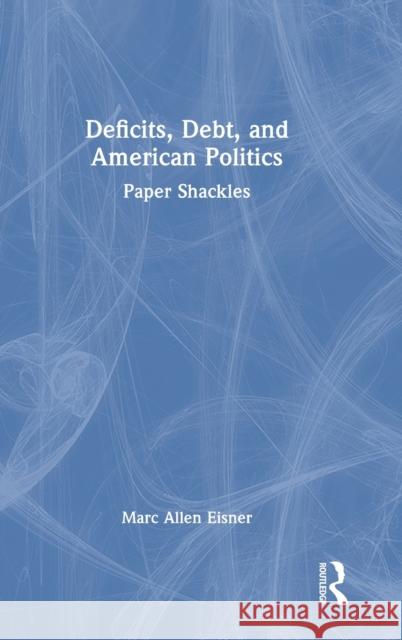Deficits, Debt, and American Politics: Paper Shackles » książka
Deficits, Debt, and American Politics: Paper Shackles
ISBN-13: 9781032497587 / Angielski / Twarda / 2023 / 296 str.
Deficits, Debt, and American Politics: Paper Shackles
ISBN-13: 9781032497587 / Angielski / Twarda / 2023 / 296 str.
(netto: 674,98 VAT: 5%)
Najniższa cena z 30 dni: 680,04
ok. 22 dni roboczych.
Darmowa dostawa!
In this groundbreaking new book, author Marc Allen Eisner, who has devoted most of his scholarly career to studying the evolution of the US political economy, explores the significant changes in the fiscal conditions of the United States during the postwar period, embedding the discussion in a broader historical context.
For most of the nation’s history, periods of growing indebtedness in the United States—a product of wars and economic crises—were followed by reductions in the debt-to-GDP ratio. But why have the last several decades failed to follow this pattern, leaving the national debt at its highest level since World War II? In this groundbreaking new book, author Marc Allen Eisner, who has devoted most of his scholarly career to studying the evolution of the US political economy, explores the significant changes in the fiscal conditions of the United States during the postwar period, embedding the discussion in a broader historical context. He demonstrates that the national debt is in part a product of reduced revenues and the growing costs of the largest entitlement programs, but it also reflects a long series of shocks, including two wars, the financial crisis and Great Recession, and the COVID-19 pandemic.
Deficits, Debt, and American Politics chronicles the history of the US debt in the postwar period, placed in the context of broader changes in the political economy and partisan politics. But it grounds this exploration in reader-friendly, chapter-length discussions of public finance, taxation, mandatory spending, and the budgetary process from a policy perspective. The volume concludes with a discussion of the challenges of comprehensive tax and program reform in the current political climate.
Deficits, Debt, and American Politics assumes little prior knowledge on the part of the reader, making it an ideal book for courses on public policy and political economy taught at both the upper-level undergraduate and graduate level. The material on public finance, long-term trends in taxation and spending, and the budgetary process, often relegated to descriptive texts, will be invaluable in courses engaging the deficit and debt.











